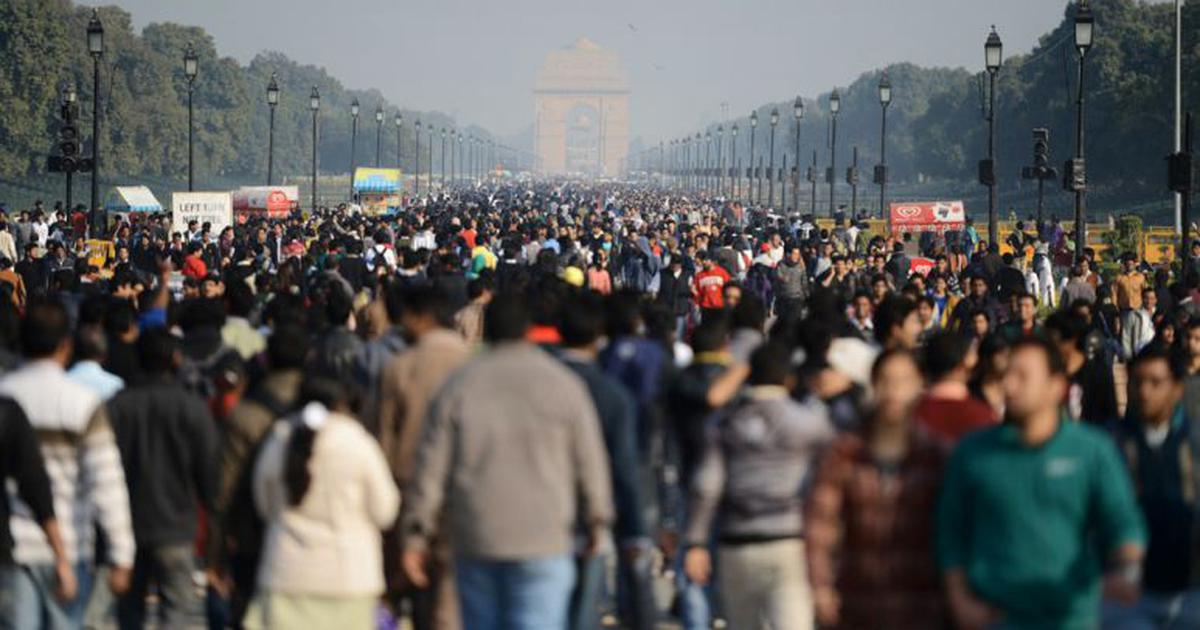In January 2023, China announced that its population fell for the first time in sixty years. This sent alarm bells of an impending demographic crisis ringing in Beijing. Around the same time, reports began coming out of international agencies, suggesting that India was poised to become the world’s most populous country, overtaking China. While the United Nations predict that this could happen by April of this year, some experts think the milestone may have been crossed already. The World Population Review, for instance, pegged India’s population at 1.41 billion at the end of 2022, about five million more than China.
Conventionally, society has been trained to think of increasing population as cause for worry. Intuition suggests that the Indian landmass, being smaller than that of China, is “overpopulated” and that the country is strapped for resources. It does not help that the politics of population in India is heavily skewed, drawing from religious biases and imagined insecurities as opposed to relying on data and facts. The conversation on population in the country, therefore, has been in terms of broad-stroke headlines, missing out on vital nuance - details which could hold important implications for the country’s economy and society.
Important to consider alongside India’s population numbers, is demography and age-profile. Recent research published by Pew suggests that people under the age of twenty five may account for more than 40% of India’s total population. The country’s median age is 28 years, making it home to about a fifth of the world’s young demographic. This stands in stark contrast to China’s median age of 39, and the United States’ 38. Both of these countries have rapidly ageing populations, as does much of the developed world. In the United States, the rising average age of Americans is counteracted to some extent by the immigration of young people from other countries. The Chinese age demographic, however, is seeing a steep rise. By even the most conservative estimates, China is expected to double its dependency ratio by 2100 - that is, the proportion of people outside of working age, reliant on other working members.
India, on the other hand, may retain its demographic dividend for much longer. Adults aged 65 and older today account only for 7% of India’s population, and they are likely to remain under 20% till 2063. India’s demographic cycle is at least ten to thirty years behind other countries, presenting an important opportunity for the country to be able to catch up with the per capita income levels of the rest of the world. Younger populations, it has been seen consistently, are more productive, tend to save more and have a larger fiscal base.
This is not to say India’s population is still growing steeply. In fact, fertility rates are falling in India much faster than the world anticipated they would, even hitting replacement levels in some states. Today, the average Indian woman is expected to have 2.1 children in their lifetime - still higher than China and the US, but indicates a significant drop from two decades ago, when their fertility rate averaged about 3.22.
Recent data from India’s National Family Health Survey indicates that population growth rates have been falling across regions and religions. That said, degrees of change have been different. India’s southern and peninsular states have significantly lower fertility rates than the north. By extension, these richer states (Tamil Nadu and Kerala, for instance) have older populations, and the poorer states (Uttar Pradesh and Bihar, mainly) have younger populations and a larger workforce. Economist Arvind Subramaniam argues in his book “Of Counsel” , that this could help incomes across these states converge, hence acting as an “equalising force”.
The opportunities India’s young population holds are not just domestic. Internationally too, they hold immense economic promise, particularly seen alongside China. Aging Asia, particularly China and Japan, today account for over 38% of global exports. By 2040, however, this region is expected to lose at least 145 million working age people, forcing investors to look elsewhere. This presents an opportunity for the younger Asian economies - ones with sizeable and positive working age populations, to attract investment.
A recent study by France-based think tank Natixs pegs India at the top of the pecking order in terms of countries investors may turn to, for both capital and labour-intensive manufacturing. Currently, the comparative advantage India has in terms of its labour market is heavily under-utilised. In 2020, for instance, India’s global market share of manufacturing was 1.45% and of which labour intensive manufacturing contributed barely anything to exports. The right policies could change this. Natixs’ paper argues that India’s massive youth population, large literate pool and policies aimed at labour reform all promise good investment prospects, placing it at the top of the Labor Supply Attractiveness Index (NLSAI).
However, India’s rise cannot be taken as a given in the face of China’s falling workforce strength. As Felman and Subramaniam argue in a recent piece, China’s slowdown will not necessarily ordain India’s resurgence. The underlying assumption behind this rationale is that global firms are looking for a country similar to China in terms of population size and economic potential. This may simply not be the case. Risk minimisation, supply chain access and labour laws are more important criteria, ones on which India does not fare so well at the moment. South-east Asian economies, being far more open and predictable, are already drawing more investment out of China than India is.
India’s demographic dividend presents an important opportunity - one that could drive significant change. To draw investment, increase employment and employability and spur growth, major policy changes will be necessary - education, skilling, and rationalising of legal frameworks. With the right tools, the next couple of decades may well be those of the Indian youth.




